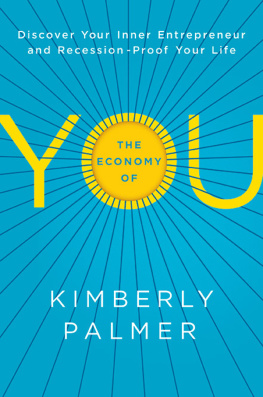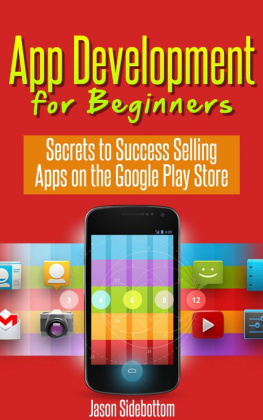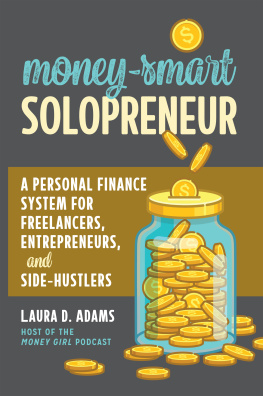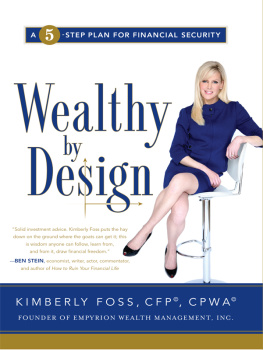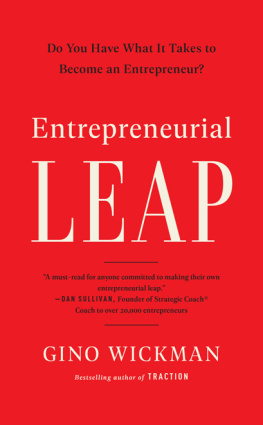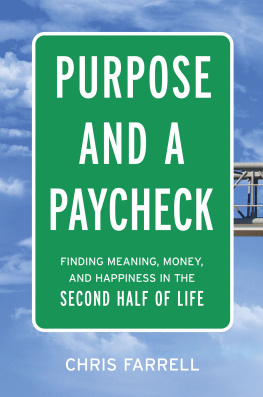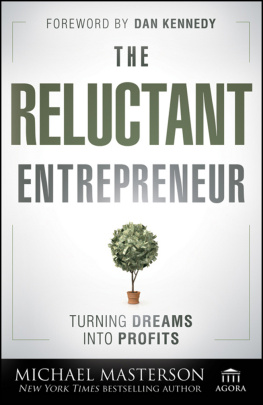Acknowledgments
THIS BOOK WOULD NEVER HAVE GOTTEN OFF THE GROUND WITHout the generosity of the many side-giggers who shared their experiences with me. I'm so grateful to each of them, for talking with me, sharing their days with me, and allowing me to tell their stories.
I'm deeply thankful to my colleagues at U.S. News & World Report, especially Kim Castro, for providing such freedom and support to write about the constantly changing world of personal finance. The idea for this book grew out of a series of stories on mastering the new economy that I wrote for U.S. News, which is also how I first met many of the side-giggers mentioned in these pages.
Many researchers, librarians, and fellow reporters also helped me as I tracked down key data on moonlighting. I especially thank Steve Hipple at the Bureau of Labor Statistics and Jenny O'Shea at U.S. News, who knows her way around the Oxford English Dictionary better than anybody (and she has the magnifying glass to prove it!).
Ever since first meeting my agent, Melissa Sarver, I've felt lucky to know such a ceaseless advocate for books and writers. Her ideas, energy, and help made this book possible. I also thank the wonderful team at AMACOM, including Irene Majuk, Debbie Posner, and Michael Sivilli, and especially my editor, William Helms, for believing in this book and providing constant feedback, suggestions, and encouraging Tweets.
My family gives me the love and support that keeps me goingmy parents, Chris Palmer and Gail Shearer, have done so since birth, along with my sisters, Jennifer and Christina Palmer. My grandmother, Janet Shearer Johnson, another source of unconditional love, also helped me with my research by sharing news stories on side-gigging with me. My husband, Sujay Dav, has been my best friend and biggest supporter ever since we met, and our children, Kareena and Neal, give me the motivation to keep goingand also excellent reasons to stop and play.
APPENDIX
A
The Top Fifty Side-Gigs
THESE SIDE-GIGS WERE SELECTED AND RANKED BASED ON A MIXTURE of objective and subjective measures. I started by gathering all of the publicly available data from the Bureau of Labor Statistics (BLS) on people who hold more than one job. The BLS puts out useful (and voluminous) information on hundreds of occupations and industries, including how much job holders work and, to some extent, their motivation for doing so. The Bureau's Occupational Outlook Handbook similarly contains details on job growth, descriptions, and training requirements across many fields.
Then, I examined reports from other sources, including Freelancer.com, Elance.com, and Payscale.com, all of which have access to the working habits of tens of thousands of people. After creating a raw list of the side-gigs that are the most popular, well-paid, and easiest to launch based on those sources, I used my own interviews with side-giggers and career experts to flesh out the rest.
While the list cuts across many different fields, from agriculture to technology, the focus, as with the rest of this book, is on side-gigs that most appeal to educated, web-savvy professionals looking for additional financial security. The side-gigs featured here tend to have low barriers to entry and high potential for pay. That's why you won't find many minimum-wage paying gigs on this list, but you'll see a preponderance of jobs that can be scaled up and branded with a side-gigger's own unique twist. After all, as this book shows, that's one of the secrets to side-gig success.
THE MASTER LIST
. Website designer
. Marketing consultant
. Financial services provider
. Legal services provider
. Social media consultant
. Fitness trainer
. Writer
. Chef
. Graphic designer
. Architect
. App developer
. Baker
. Voice actor
. Education and training consultant
. Interior designer/decorator
. Illustrator
. Landscape designer
. Life coach
. Web developer
. Keynote speaker
. Gardener
. Handyman
. Career coach
. Tattoo artist
. Event planner
. Pet sitter
. Fine artist
. Online community builder
. Software-specific consultant
. Yoga teacher
. Disc jockey
. Florist
. Home organizer
. Singer/musician
. Personal shopper
. Video editor
. Babysitter
. Construction worker
. Dancer/actor/performer
. Nutritionist
. Blogger
. Data enterer
. Comedian
. Copywriting
. Search engine optimization consultant
. Information technology consultant
. Tutor
. Housekeeper
. Makeup artist
. Wedding officiant
1. WEBSITE DESIGNER
Web designers straddle two worlds: the technical and artistic sides of web development. That means they create sites that are both functional and good-looking. Since everyone from large corporations to small-time freelancers need websites these days, their services are in hot demand. That's why website design was listed as one of the fastest growing jobs of 2012 by Freelancer.com, with over 10,000 job listings posted on its site in the first quarter of the year alone. It pays the equivalent of around $60,000 a year, with part-time, freelance graphic web designers pulling in a median rate of almost $30 an hour, according to PayScale.com. For anyone who's already mastered technical and design skills through work experience and experimentation, the start-up costs are minimalno advanced degrees, formal training, or licenses are required.
BEST FOR: Web and html-savvy designers with free weekend time.
RESOURCES: Freelancer.com, Meetup.com, WebProfessionals.org
Spotlight On Joe DePalma, art director for a web design company and freelance web designer; age: 32; location: Fairfax, Virginia
Why did you launch your side-business?
JOE D: I have a wife and mortgage and I paid for school myself at Savannah College of Art and Design, which is extremely expensive. That put me in a mountain of debt. With freelancing, I can increase my income by 50 percent. It's not just for the money; I know that eventually, I want to own my own company full time.
How do you avoid conflicts of interest with your full-time job?
JOE D: I don't countermarket against my day job. I don't even have a website that's live right now. All my business is referral-based. There's going to be a conflict of interest if I'm marketing myself against my day job.
How do you find time to do both?
JOE D: I do my freelance work on weekends and evenings. I usually start working again around 8 p.m. and on busy nights I can go until midnight, and then Saturday mornings and Sundays are my busiest times. During the week, I don't always have the energy, especially after cranking it out all dayI run out of steam creatively.
What's the hardest part about juggling both your freelance and full-time work?

